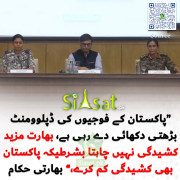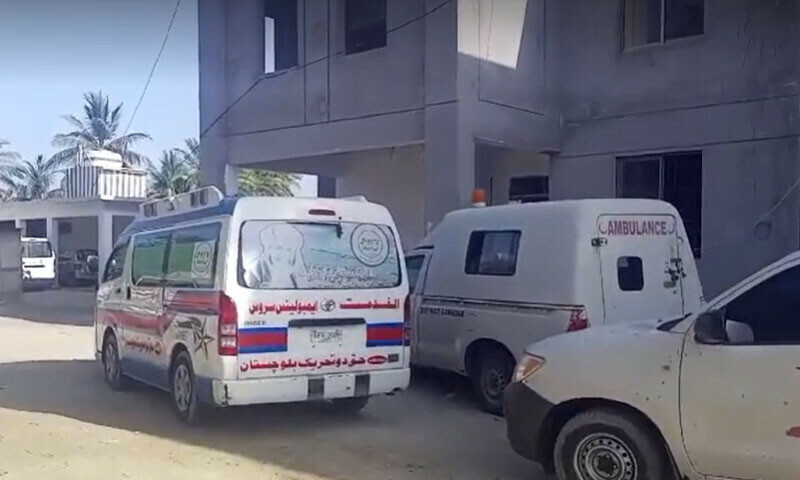Night_Hawk
Siasat.pk - Blogger
Drug can repair spinal cord injuries, study shows
By James Gallagher Health editor, BBC News website

A drug that can encourage nerves in the spinal cord to grow and repair injuries has been developed by US scientists.
The study on rats, published in the journal Nature, showed some degree of movement and bladder control could be restored.
The drug works by disrupting the "sticky glue" that prevents nerve cells from growing during an injury.
Further tests still need to take place, but the charity Spinal Research said "real progress" was being made.
Damage to the spinal cord interrupts the constant stream of electrical signals from the brain to the body.
It can lead to paralysis below an injury.
The team at Case Western Reserve University School of Medicine, in Ohio, said scar tissue that formed after an injury prevented spinal cord repair.
Sugary proteins are released by the scar tissue which act like glue.
The long spindly part of the nerve - the axon - gets trapped in the glue if it tries to cross the site of the injury.
'Amazing' The research team injected a chemical under the skin which crossed into the spinal cord and disrupted the activity of the glue.
"It was amazing - the axons kept growing and growing," said lead researcher Prof Jerry Silver.
In the tests, 21 out of 26 rats showed some degree of recovery either in their ability to move or in bladder function.
Prof Silver told the BBC: "What we could see was really remarkable. Some recovered to a fantastic extent and so well you could hardly tell there was an injury."
He says further testing in larger animals is needed before human trials can take place.
But he sees any future therapy resulting from the research as working in conjunction with other treatments being pioneered such as nerve transplants and electrical stimulation.
Plasticity Dr Mark Bacon, from the charity Spinal Research, said: "I like Prof Silver's work.
"We believe plasticity - the reorganisation and rerouting of signal pathways - is the major mechanism responsible for the spontaneous recovery we see in patients with spinal cord injury, but is very limited.
"Enhancing plasticity is therefore a major goal for the field.
"Preliminary data here suggests that real progress is being made towards this."
Dr Lyn Jakeman, from the US National Institute of Neurological Disorders and Stroke, said: "There are currently no drug therapies available that improve the very limited natural recovery from spinal cord injuries that patients experience.
"This is a great step towards identifying a novel agent for helping people recover."
Source
By James Gallagher Health editor, BBC News website

A drug that can encourage nerves in the spinal cord to grow and repair injuries has been developed by US scientists.
The study on rats, published in the journal Nature, showed some degree of movement and bladder control could be restored.
The drug works by disrupting the "sticky glue" that prevents nerve cells from growing during an injury.
Further tests still need to take place, but the charity Spinal Research said "real progress" was being made.
Damage to the spinal cord interrupts the constant stream of electrical signals from the brain to the body.
It can lead to paralysis below an injury.
The team at Case Western Reserve University School of Medicine, in Ohio, said scar tissue that formed after an injury prevented spinal cord repair.
Sugary proteins are released by the scar tissue which act like glue.
The long spindly part of the nerve - the axon - gets trapped in the glue if it tries to cross the site of the injury.
'Amazing' The research team injected a chemical under the skin which crossed into the spinal cord and disrupted the activity of the glue.
"It was amazing - the axons kept growing and growing," said lead researcher Prof Jerry Silver.
In the tests, 21 out of 26 rats showed some degree of recovery either in their ability to move or in bladder function.
Prof Silver told the BBC: "What we could see was really remarkable. Some recovered to a fantastic extent and so well you could hardly tell there was an injury."
He says further testing in larger animals is needed before human trials can take place.
But he sees any future therapy resulting from the research as working in conjunction with other treatments being pioneered such as nerve transplants and electrical stimulation.
Plasticity Dr Mark Bacon, from the charity Spinal Research, said: "I like Prof Silver's work.
"We believe plasticity - the reorganisation and rerouting of signal pathways - is the major mechanism responsible for the spontaneous recovery we see in patients with spinal cord injury, but is very limited.
"Enhancing plasticity is therefore a major goal for the field.
"Preliminary data here suggests that real progress is being made towards this."
Dr Lyn Jakeman, from the US National Institute of Neurological Disorders and Stroke, said: "There are currently no drug therapies available that improve the very limited natural recovery from spinal cord injuries that patients experience.
"This is a great step towards identifying a novel agent for helping people recover."
Source
Last edited by a moderator:





































